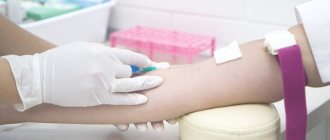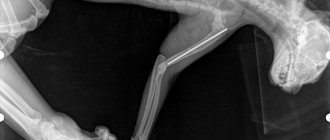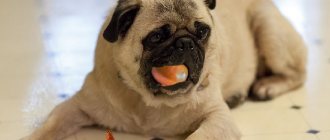- July 29, 2020
Infusion therapy is one of the most important and widespread methods of maintenance therapy in cats and dogs, used for a very wide range of diseases and pathological conditions.
In veterinary practice, the method consists of introducing medicinal solutions (usually subcutaneous or intravenous) into the body. It is used for violations of water-electrolyte, acid-base balance.
Goals of fluid therapy
In a healthy body, organs and systems work in harmony, the ratio of water, electrolytes, and other substances that make up the blood plasma is constant - this state is called homeostasis - the constancy of the internal environment.
When exposed to traumatic factors, this ratio can be disrupted, which causes a whole chain of disturbances in the functioning of the body. The goal of infusion therapy is to achieve the maximum possible restoration of natural water-electrolyte and acid-base balance by introducing the necessary substances and medications in order to ensure the most effective functioning of organs and systems and minimize the impact of damaging factors.
In addition, infusion therapy can affect blood supply - the quantity and fluidity of blood, which is important, since when blood circulation is disrupted, tissues begin to experience a lack of oxygen and nutrients and intoxication with the products of chemical processes occurring in cells. Thanks to the intake of medicinal solutions, toxic substances that have entered from the outside or formed inside the body are eliminated.
In addition, some drugs necessary for treatment can be administered to the animal exclusively intravenously; in any case, infusion therapy will be indicated for such a patient.
Catheter composition
The catheter includes five components:
- Valve – for drug administration. As a rule, it is multi-colored.
- A stiletto is a piston with a needle.
- The final part of the stylet is removed after installation of the catheter.
- The cannula is the final part of the stylet. An injection system or a syringe without a needle is connected here.
- Cannula Cover - Screws onto the end of the catheter to cover the entrance to the vein.
If your pet has diarrhea or urinary incontinence, it is not recommended to insert a catheter into their hind leg - this will add problems with the sterility of the device, which must be kept clean at all times.
Indications for infusion therapy
There are many indications for the use of infusion therapy. Conditions in which its use is indicated are:
- dehydration. Diarrhea, vomiting, impaired excretion of fluid by the kidneys and other conditions can cause intense loss of water by the body, which does not have time to be replenished. In this case, the animal is advised to administer large volumes of solutions to compensate for the rapid loss of fluid;
- shock. In a state of shock, the patient needs urgent administration of large volumes of crystalloids, colloids or other solutions to fill the space inside the vessels and increase insufficient blood circulation;
- surgical intervention. When an animal is under anesthesia during surgery, the normal processes for maintaining a constant internal environment are disrupted. A dropper for a cat or dog is necessary to restore normal venous circulation, replenish the lack of fluid that occurs during an operation during which the animal cannot drink, and correct the effects of drugs used for anesthesia;
- intoxication. With vomiting and diarrhea, the body loses a large amount of fluid, as well as a number of electrolytes, such as chlorides, potassium, sodium, bicarbonates, in addition, the absorption of water and minerals in the intestine is impaired, which also leads to dehydration, hyponatremia, hypokalemia, etc. . In addition, in case of poisoning and infectious diseases, the intake of large amounts of water contributes to a more rapid elimination of toxic substances that have entered the body or formed as a result of the vital activity of pathogenic microorganisms;
- injuries of various nature. Injuries often result in significant blood loss, and fluid resuscitation is known to be a safe method of restoring fluid volume in the body. This method was used before the advent of reliable blood transfusion techniques, is still widely used and in some cases can give very good results;
- disruption of the supply of nutrients to the body. If for some reason the animal is not able to eat on its own, so-called “parenteral” (intravenous) nutrition is used, designed to enable the body to receive the necessary nutrients;
- violation of the quantity and ratio of vital substances in the body. In a number of diseases, the composition of the internal environment may change; in this case, infusion therapy should help replenish the missing amount of necessary substances or restore their balance by introducing a substance that has the opposite effect.
Thus, we can say that the introduction of solutions into the body is indicated for the treatment of a very wide range of diseases: infectious (to replenish lost fluid and electrolytes and remove toxic compounds), chronic (to normalize the balance of substances that make up biological fluids), injuries, intoxications, etc. .d.
Subcutaneous infusion
Subcutaneous infusion can be given to cats and dogs that do not require large volumes of fluid; Not suitable for large animals, dogs and cats that are in serious condition and have severe dehydration. Typically recommended for subacute conditions and chronic diseases. Only solutions that do not irritate tissue are injected subcutaneously.
The solutions are administered using a large-volume syringe and an injection needle (usually a butterfly needle) into the space between the skin and the underlying tissues, usually in the withers area. A swelling forms at the site of injection of the solution; when touched, you can feel the liquid under the skin. Over the course of several hours, as the body consumes the missing substances, the swelling decreases and then disappears altogether.
Intravenous infusion
The most common and most preferred option for introducing solutions into the body, usually called a “dropper”.
It is used for cats and dogs in serious condition, with rapid and severe dehydration, acute diseases and in other cases. Allows you to administer a given amount of solution per unit of time, including for a very long time, for many hours, does not cause discomfort to the animal, and is painless for it. Injected drugs quickly enter the body and are distributed throughout it. However, at the same time, intravenous infusion requires constant monitoring of the patient’s condition, often requires a long stay in the hospital of a veterinary clinic, and access to the venous bed is required. To carry out such an infusion, the patient is given an intravenous catheter, with which he will need to walk all the time until there is no longer a need to administer solutions and medications, and change it every 5 days. The solution can be administered either using a dropper (generally, such a dropper is needed for a large dog that needs a large volume of liquid), or using an infusion pump - a device that ensures the administration of a strictly defined amount of solution per unit of time.
Sometimes solutions and drugs can be administered not by drip, but by stream - directly with a syringe into an intravenous catheter; this method is used if the patient needs to receive only drugs, and not a large volume of solutions.
Assembling and placing an IV in a dog - step-by-step instructions
Note! Using a disposable bag with handles, it is quite possible to build a “cradle” for a bottle of medicine. We cut a small hole in the bottom of the bag (so that the neck of the container can fit through), tie the handles tightly and use the resulting loops to hang the dropper on a trempel, hook or nail.
Important! There must be no air bubbles in the tube below the filter tank!
The optimal place for infusion is the wide veins on the front legs. Trim or shave the hair between the wrist and elbow. Tighten the paw with a tourniquet above the area where the puncture will occur. Most often, veins are clearly visible in dogs. We do not remove the tourniquet until the needle is inserted.
We insert the needle into the vein, having previously disconnected it from the dropper. Parallel to the paw, slowly and carefully, with moderate pressure. You have done everything correctly if, after inserting the needle, a few drops of dark venous blood are released from the dilator. We fix the needle with an adhesive plaster, remove the tourniquet, and attach the system. The process has begun, now your task is to monitor your pet and the puncture site. If you need to inject the drug under the skin, the algorithm is the same, but the needle is inserted into the withers, strictly parallel to the spine.
Important! The solution for administration must be warm!
Basic solutions for infusion therapy
Solutions intended for infusion therapy are divided into crystalloid and colloid.
Crystalloid solutions are an aqueous solution of ions and organic components of blood buffer systems. They often contain calcium, sodium and magnesium in small concentrations, allowing large amounts of solution to be safely administered over a short period of time. Intravenous administration of such solutions helps to quickly restore the volume of fluid inside the vessels. Subsequently, the fluid leaves the lumen of the vessels and is distributed in the tissues. Crystalloid solutions are iso-, hypo- and hypertonic. Hypertonic solutions cause fluid to escape from cells into the bloodstream, which increases the volume of fluid in the lumen of the vessel. A small amount of solution is needed for this purpose, which is very convenient when the animal needs to quickly restore normal blood circulation. In addition, hypertonic solutions can have a beneficial effect on some physiological indicators and parameters of the immune system.
The most common solutions of this group: sodium chloride 7.5%, 10%, mannitol 25%, glucose 10%, 40%. Hypotonic solutions have the opposite effect - free fluid enters the cells. This effect helps remove excess water from tissues and blood vessels, for example, when swelling begins. The most commonly used hypotonic solutions are glucose 2.5%, 5%, sodium chloride 0.25%. Isotonic solutions are the most commonly used group of solutions; their osmolarity is equal to the osmolarity of blood plasma, due to which fluid does not move from cells to the bloodstream or in the opposite direction.
Because of these properties, such solutions can be used without the risk of disturbing the balance between intracellular and extracellular fluid. They are used for almost all tasks of infusion therapy: replenishing fluid deficiency, restoring water-electrolyte, acid-base balance, etc. This group includes the most commonly used solutions: sodium chloride 0.9% (saline), Ringer's solution, isotonic sterofundin.
Colloidal solutions contain large molecules of organic substances, causing rapid flow of liquid into the vessels without leaving the bloodstream, while retaining it there for a long time. This group includes dextrans, gelatins, hydroxyethyl starches, and also human serum albumin. These solutions are used less frequently than crystalloid ones, and many of these drugs have a number of side effects.
Algorithm for preparing a dropper
Before performing basic manipulations, it is important to properly prepare the IV. This procedure is performed in several stages.
READ How to install the magic player extension
Preparation
Hands are treated with an antiseptic. After this, gloves are put on.
They should also be degreased.
Opening the bottle
The next step is to open the bottle with the solution and the system itself. The entire metal cap should not be removed: only its central part is removed.
Inserting needles into the bottle and fixing the container
Both needles are inserted into the rubber stopper.
After this, you need to fix the bottle so that it is located upside down. At home, you can use improvised materials for this purpose, for example, a mop handle and tape.
It is necessary that the container is located at a height of 45-50 cm from the dog.
Preparing the dispenser
The dispenser lever should be moved all the way and thus clamp the tube.
After this, you need to press the reservoir with the filter several times so that it draws in the drug. All that remains is to shake the chamber to remove excess air and slightly lower the lever on the dispenser, thus adjusting the speed of movement of the liquid.
Complications from the procedure
Infusion therapy is a relatively safe method of treatment; complications, as a rule, occur only in the event of serious medical errors, if contraindications to the infusion or conditions that affect the specifics of its implementation are not taken into account.
When introducing excessive or insufficient amounts of solutions, an imbalance of fluid and electrolytes in the body may occur (metabolic acidosis, hypernatremia, swelling of internal organs and tissues when they are overloaded with fluid). Fortunately, the body is a self-regulating system, and even with significant errors in the quantity and quality of the injected fluid, it is able to adapt to them without serious damage.
However, there are conditions in which such errors are very dangerous and can even lead to the death of the patient. First of all, these are conditions associated with the accumulation of large amounts of fluid in organs and tissues or the danger of their occurrence. In case of pulmonary edema, cerebral edema (or the threat of their occurrence), a number of heart and kidney diseases, infusion therapy should be carried out with great caution with mandatory monitoring of the patient's condition.
For some diseases and conditions, such as diabetes mellitus, acute urinary retention, heart failure, chronic kidney disease, anemia, hypoproteinemia, intravenous administration of solutions requires special attention and careful adherence to protocols, an individual approach to the patient is important.
Back
How to choose a vein for injection with a catheter
The catheter can be placed in any large superficial vein, soft and elastic, without knots or seals. But most often the cephalic vein, the medial and lateral vein of the safen are used for this purpose.
The lateral vein of saphena in dogs is more accessible for injections than in cats, so most often dogs have a catheter placed in this vein. For cats, it is easiest to insert the device into the medial vein of the saphen.
The catheter can be placed in any large superficial vein, soft and elastic, without knots or seals. But most often the cephalic vein, the medial and lateral vein of the safen are used for this purpose.
If your pet has diarrhea or urinary incontinence, it is not recommended to insert a catheter into their hind leg - this will add problems with the sterility of the device, which must be kept clean at all times.
For intravenous injections, it is better to place a catheter in peripheral veins.











